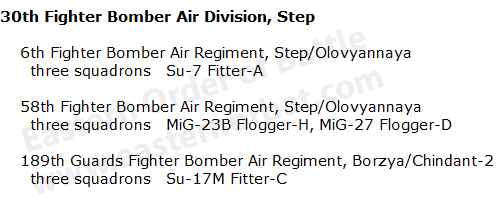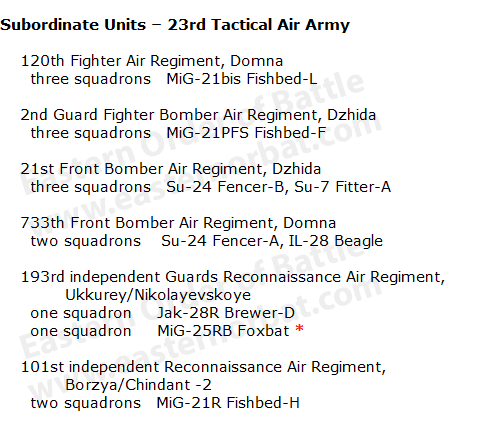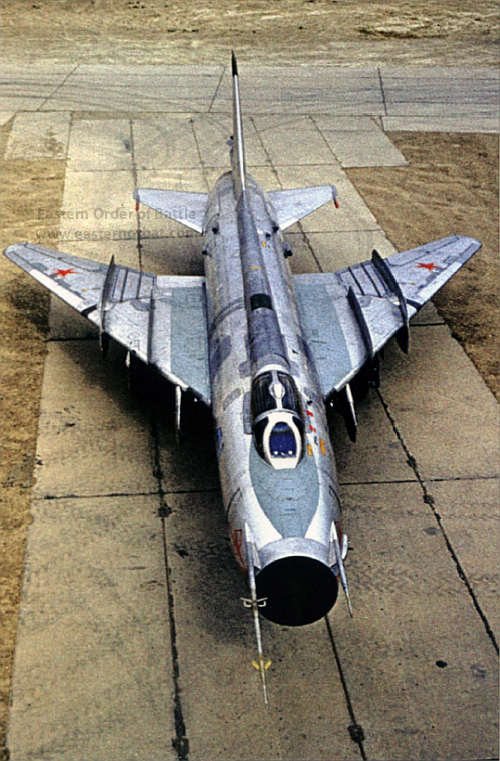|
|
|||||||||||||||||||||||||||
 |
|||||||||||||||||||||||||||
 |
|
Soviet Transbaikal Military District's |
|
|
||||||||||||||||||||||||||||||
|
|
|
The 23rd Air Force's two divisions deployed in Mongolian People's Republic: |
|
|
|
|
|
|
The reconnaissance capacity has been improved. The 193th regiment received a squadron of MiG-25 Foxbat. In addition to the squadron at Borzya, they received another squadron from the Baltic Military District. The two squadrons merged. The old MiG-15bisR Fagot was withdrawn. The new 101st independent Reconnaissance Air Regiment's two squadrons received MiG-21R Fishbed-H type. |
|||||
|
The modern Su-24 Fencer supersonic, all-weather attack aircrafts and the high-speed MiG-25 Foxbat could not been shut down by the Chinese air defenses. |
|||||
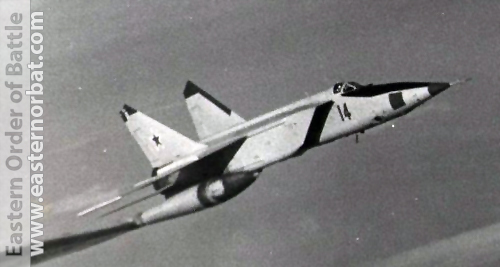 |
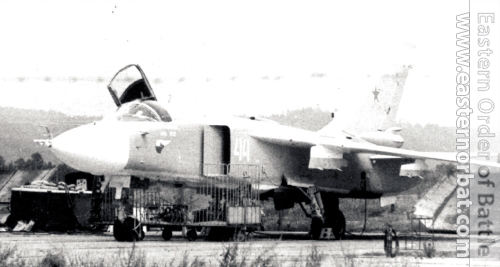 |
||||
|
|
|
|
|
|
|
|
|
|
|
|
|
The soviet crews and their families were placed into better conditions. Panel housing estates were built near airports. They lived in poverty in European eyes, but it was better than living in tents. Shelters were built for airplanes at airports to protect them from Chinese attack. |
|
|
|
|
|

